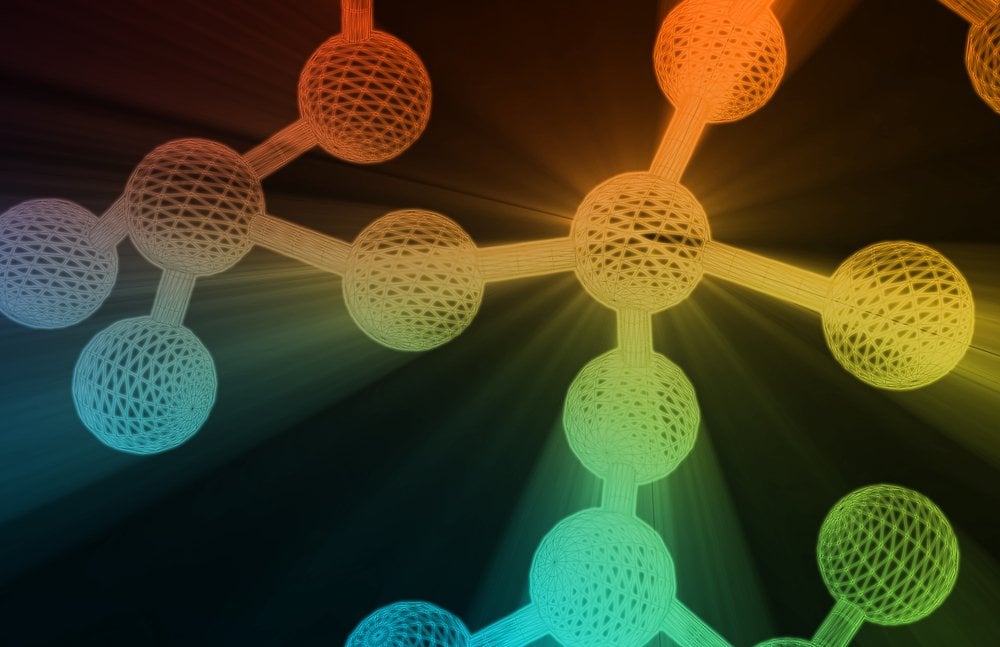In the 1990s and early 2000s, the Human Genome Project enabled the first count of human genes. The result was, to be candid, a little embarrassing. Just 20,000 genes coded the marvel that is a human being, fewer than the standard lab mouse (closer to 30,000 genes) and a fraction of the genes that comprise the lowly parasite responsible for the sexually transmitted infection trichomoniasis (about 60,000).
Around the world, puzzled scientists asked: How could you explain the complexity of a human being with so few genes? Part of the answer comes from something known as epigenetics.
Suppose our genomes were sheet music, the DNA that makes each gene would be the notes. They get all of the attention and largely dictate how our genomes are “performed” by our cells. But if you’ve ever spent time looking at sheet music, you know there are other notations—symbols that tell how fast to play, in which key, and when to cut to the chorus. Epigenetic marks are like those extra notations. They ride along with the genes but aren’t part of them, and they govern how the DNA is packaged up, when and how it’s read, and which parts get skipped over.

Unlike your DNA, which is remarkably stable throughout your lifetime, the epigenetic marks on top of your genome are much more susceptible to change. New marks can be added or old marks stripped away, depending on your environment, nutrition, stress levels, physical or psychological trauma, and other factors. Exposure to toxic chemicals, for instance, can leave a severe epigenetic imprint—but that imprint may be undone over time once the exposure has been stopped.
It turns out that epigenetics explains some of the biological complexity that genes alone cannot. Epigenetic marks can turn a gene on or off or change how the cellular machinery interprets its code in our bodies. Epigenetics controls how our DNA is packaged inside the cell and how new cells are assigned specific tasks in the body. Through epigenetics, we can adapt to environmental changes quickly—something that would be impossible for our staid DNA.
Conventional wisdom says epigenetic marks get wiped clean at conception when sperm and egg cells meet. But scientists have learned that these tags can be inherited and persist from parent to child and across many generations. Epigenetic marks triggered by trauma, such as famine or violence, can be found generations later in a family—where they continue to influence a person’s health.

Epigenetics & You
Epigenetics is a biological tool; it’s not inherently good or bad. Epigenetic marks can keep your body healthy and humming along—in studies of the very young and the very old, there were far more epigenetic tags in a newborn and a young adult than there were in a centenarian, indicating that our epigenetic levels decrease as we age, much like other genetic factors that degrade and contribute to our failing health as we get older.
Epigenetics can also go awry. Certain diseases, known as imprinting disorders, are triggered when the usual epigenetic marks don’t populate correctly in an embryo or fetus. These disorders exist from birth and often affect a person’s growth, metabolism, and development. Epigenetics can also contribute to the onset of diseases during our lives: some epigenetic changes have been linked to an increased risk of cancer, especially breast and colorectal cancers.
And then there’s our epigenetic response to the environment and diet. Smoking triggers epigenetic changes, often stripping away standard epigenetic marks in proportion to how heavily someone smokes. But because epigenetics adapts, smokers who quit can eventually regain those marks and return to near-normal levels with enough time.
While scientists are still working toward a complete understanding of the myriad impacts epigenetic changes can have on our health, they have already shown that periods of stress or trauma can leave a lasting mark. Your epigenetic tags can also be influenced by the quality and quantity of foods you eat, exposure to infectious diseases, environmental factors such as toxins and chemicals, and more.
Epigenetics & Your Family
While epigenetic marks can change throughout a person’s lifetime, some have real staying power—not just for one person’s life, but for generations. Some of the epigenetic tags you have were probably passed down to you from great-grandparents or earlier ancestors, and some of the changes that happen to your epigenetics have the potential to be passed on for many generations.
Scientists are still sorting out how this happens and how it shapes our health—the generation-spanning studies required can take decades to produce results. But already, there’s enough data to show that cross-generational epigenetics is a significant driver of health and disease.
For example, limited access to food in one generation (especially during the critical years just before puberty) has significant implications for descendants. Studies from Sweden have found that people who faced hunger when they were 8-12 years old had grandchildren with longer lifespans; those who had an abundance of food were more likely to have grandkids who died younger. (Sound backwards? The theory is that our bodies learn to adapt quickly to food scarcity, and those protective adaptations may be passed on to subsequent generations.) In some cases, grandkids of well-fed people were also found to be at higher risk of cancer.
But having hungry grandparents isn’t all good news (especially for them). Other studies report that women who suffer through famine while pregnant have children and grandchildren with increased risk of type 2 diabetes. Their kids were also more likely to have coronary artery disease, high cholesterol, and obesity.
Stress has ripple effects across the generations as well. (Fortunately, not the stress you feel when you’re cramming for a tight work deadline.)
Epigenetic changes have been found in the adult children of Holocaust survivors; these changes influence how their bodies respond to stress, including the production of the stress hormone known as cortisol. A study of women who developed PTSD after 9/11 showed similar effects in their children, whose lower cortisol levels make them more vulnerable to PTSD.
But it doesn’t take genocide or a massive terrorist attack to rewrite the epigenetic code. In one study, people with distinct epigenetic changes in four genes shared a common trait: grandmothers who had reported some interpersonal violence while they were pregnant. Scientists have also found that stressors such as childhood abuse in boys lead to significant changes in the epigenetic marks in their sperm later in life, which could lead to altered epigenetics in their kids.
What You Can Do
While the science of epigenetics has yet to advance to the point of offering clear guidelines for interpreting the changes you might have inherited from your ancestors or ensuring the best health for you and your descendants, common-sense steps do exist. To wit: Eat high-quality, nutritious food without regularly overindulging. Don’t smoke, and avoid exposure to nasty chemicals or other toxins. Incorporate exercise into your wellness routine and manage your stress carefully. And don’t forget to appreciate your body’s remarkable capacity to adapt to your lifestyle and environment—it’s incredible, especially given our humble gene count.
















